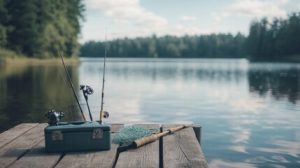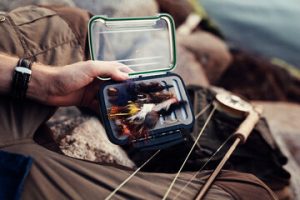Kevin Hawk’s Fishing Tools: Essential Gear for Successful Angling
Fishing is both an art and a science, requiring the right combination of technique, patience, and equipment. Professional anglers like Kevin Hawk understand that success on the water depends heavily on having the right tools. While skill and strategy play a big role, specialized fishing tools are what make accurate casting, efficient retrieval, and effective fish handling possible. This guide explores the essential fishing tools that contribute to an expert-level angling experience.

The Importance of Quality Fishing Gear
Every successful fishing trip begins with well-chosen gear. High-quality tools not only improve efficiency but also enhance the overall experience. From precision casting to safe fish handling, each piece of equipment serves a specific purpose. Professional anglers focus on durability, versatility, and performance when selecting their tools to ensure they can handle different environments and conditions.
Rod and Reel Setup
The foundation of any angler’s toolkit is the rod and reel combination. Kevin Hawk’s fishing tools likely include a range of setups designed for various techniques such as finesse fishing, flipping, or topwater presentations.
- Rods: The choice of rod length, power, and action directly affects casting accuracy and sensitivity. Longer rods provide greater casting distance, while shorter rods offer better control in tight spaces.
- Reels: Both spinning and baitcasting reels have unique advantages. Spinning reels are versatile and ideal for lighter lines, while baitcasters provide superior control for heavier lures and precise placement.
Lure Selection and Terminal Tackle
Lures are essential in attracting fish, and the right selection can make or break a fishing day. A well-equipped tackle box typically includes:

- Soft Plastics: Perfect for finesse techniques like drop-shotting or Texas rigs.
- Crankbaits and Jerkbaits: Effective for covering water quickly and triggering reaction strikes.
- Spinnerbaits and Jigs: Versatile lures that work in multiple water conditions and depths.
Terminal tackle—hooks, weights, swivels, and snaps—completes the setup, ensuring that lures are presented naturally and securely.
Fishing Line Choices
Line selection is another critical aspect of a professional angler’s toolkit. The three main types include:
- Monofilament: Known for stretch and buoyancy, making it suitable for topwater lures.
- Fluorocarbon: Offers low visibility underwater and excellent abrasion resistance, ideal for clear water conditions.
- Braided Line: Extremely strong and sensitive, perfect for heavy cover and long casts.
Many anglers carry multiple spools to adapt to different fishing environments and target species.
Tools for Rigging and Maintenance
Beyond rods and reels, several small but essential tools make rigging and maintenance easier:
- Needle-Nose Pliers: Used for removing hooks safely and crimping split shot weights.
- Line Cutters: Sharp cutters or scissors designed for cleanly cutting all types of fishing line.
- Hook Sharpeners: Keeping hooks sharp ensures better penetration and a higher hook-up ratio.
- Split Ring Pliers: Helpful for changing out hooks or adding components to lures efficiently.
These tools might seem minor compared to rods and reels, but they play a significant role in ensuring readiness and efficiency on the water.
Electronics and Navigation Tools
Modern anglers rely on advanced electronics to locate fish and structure effectively. Fish finders, GPS units, and mapping software help identify productive areas and track patterns. Kevin Hawk’s fishing tools likely include high-resolution sonar systems and chart plotters for accurate navigation and depth reading.
These technologies provide real-time data on water temperature, depth, and structure, allowing anglers to make informed decisions about lure selection and presentation.
Safety and Fish Care Equipment
Responsible anglers prioritize both personal safety and the well-being of the fish they catch. Common safety tools include life jackets, first-aid kits, and protective gear for handling sharp hooks and slippery surfaces. For fish care, equipment like landing nets, fish grippers, and livewell systems help ensure that catches are handled ethically, especially during catch-and-release practices.
Maintaining healthy fish populations benefits both the ecosystem and the sport, making these tools essential for sustainable angling.
